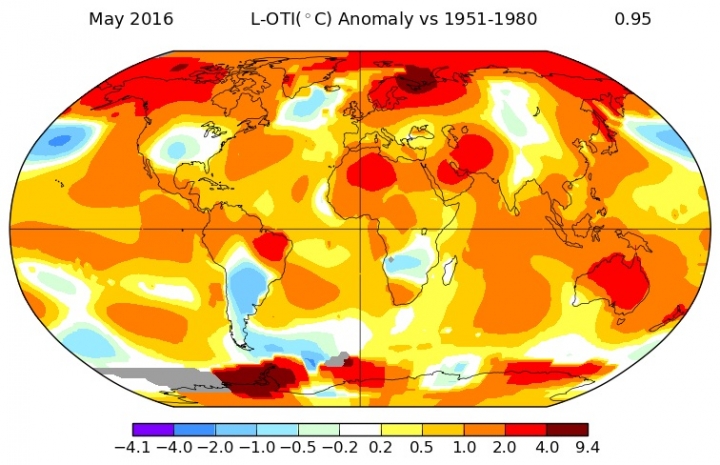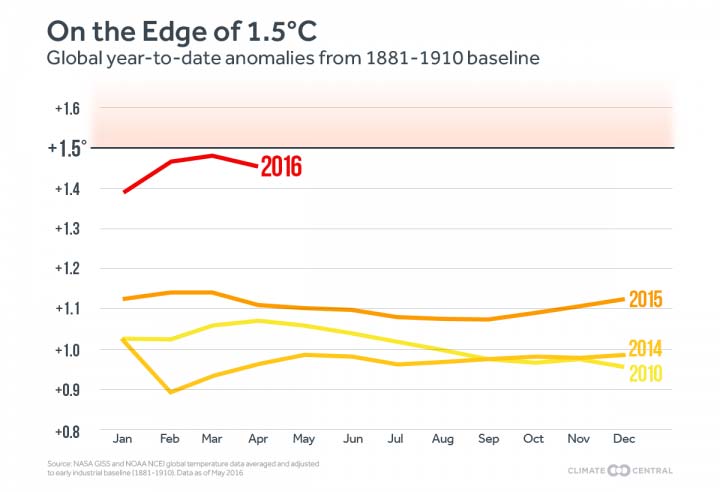May Was Planet's Hottest Month on Record, NASA Says

The streak continues: May was record warm for the globe, according to NASA data released Monday.
It's now even more likely that 2016 will be the hottest year ever recorded, despite the demise of one of the strongest El Niños on record.
NASA put May at 1.67°F (0.93°C) warmer than the 1951-1980 average for the month, the first month since October 2015 to be less than 1.8°F (1°C) above average in their dataset, which extends back to 1880.
So far this year every month has been record warm. February and March actually set consecutive records for the most anomalously warm month, according to data from the National Oceanic and Atmospheric Administration (NOAA). February retained that record by NASA's reckoning.
NOAA will release its global temperature data on Friday. If it also rates May as record warm, it will be the 13th month in a row to reach that mark in its records. NASA and NOAA use slightly different methods to process the temperature data and use different baseline periods for comparison (NOAA uses the 20th century average).
'99 Percent Chance' 2016 Will Be Hottest Year Alaska Continues to Bake, on Track For Hottest Year Arctic Sea Ice Breaks May Record . . . By A Lot
Even without May's record heat, there was a 99 percent chance that 2016 was going to best 2015 as the warmest year on record.
Sign up for the Live Science daily newsletter now
Get the world’s most fascinating discoveries delivered straight to your inbox.
Whether that happens depends on how the remainder of the year plays out. A La Niña — which tends to depress global temperatures — is expected to form by fall, but La Niña's biggest effects will likely come in 2017.
And though El Niño provided a small boost to those temperatures, the main driver is the excess heat that has been trapped by decades of unabated emissions of carbon dioxide and other greenhouse gases. In fact, La Niña years now are hotter than El Niño years of several decades ago.

To show how much the average temperature of the planet has warmed since preindustrial times, Climate Central reanalyzed both datasets, averaging together the NOAA and NASA temperatures and comparing them to those from the period 1881-1910. Through April, the global average temperature was 2.6°F (1.45°C) above the average from that earlier period.
Nations have agreed to limit carbon dioxide emissions to keep warming under 2°C (4°F) by the end of the century, but have discussed trying to achieve an even more ambitious target of 1.5°C (3°F).
You May Also Like: A Simple Idea Could Help Wildlife Survive Climate Change Scientists Turn Carbon Dioxide Emissions to Stone Recent Deluge in France Boosted By Warming El Niño Had a Good Run, But Now It's Over
Originally published on Climate Central.

Andrea Thompson is an associate editor at Scientific American, where she covers sustainability, energy and the environment. Prior to that, she was a senior writer covering climate science at Climate Central and a reporter and editor at Live Science, where she primarily covered Earth science and the environment. She holds a graduate degree in science health and environmental reporting from New York University, as well as a bachelor of science and and masters of science in atmospheric chemistry from the Georgia Institute of Technology.










